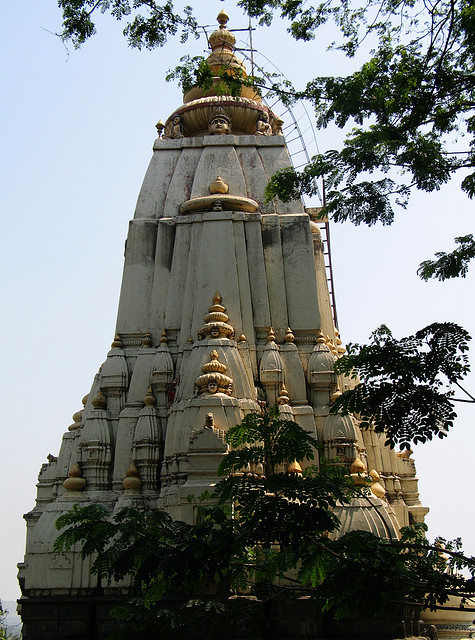Shri Devi Navadurga Temple,Kanyale-Redi
Originally from Goa.Ancient Gram Devta of Kanyale-Redi,Vengurla.
Originally from Goa.Ancient Gram Devta of Kanyale-Redi,Vengurla.
The Sagreshwar beach also houses the quaint and rustic Sagareshwar temple of Lord Shiva. The temple has been built with stones and imparts a grand look which is in total contrast to the approachable and submissive sea waves that splash the temple footsteps.
The beach surrounding the temple has been carefully crafted and tended in order to grow a blooming courtyard full of colorful variety of flowers. The courtyard also presents a massive Deepstambh right at the entrance of the temple and of course the ever vigilant Nandi the Bull at the entrance of the Lord’s abode.
The Vajreshwari temple and the place owe a lot to the existence of the Akloli springs in the vicinity. There exist several hot springs, rich in minerals and sulphur, which owe their existence to the violent volcanic activities in the area in the past. The water from such springs has been tapped and brought to some tiled tubs near the temple. This is a running water tub and though utilized by thousands the chances of catching infection are negligible due to high temperature and chemicals present in the running water.
The Samadhi and temple of Swami Nityananda and Bhimeshwar Ganesh Shrines are within walkable distance from the Ashram. The temple of Nityananda depicts the life-story of the Guru who had attained Mahasamadhi. The atmosphere is serene and the experience is divine.
The Parshuram mandir in the area is another example of profound impact ancient history has upon the place. The Brahmin sage had vowed to cleanse the Kshatriya (Warrior Clan) Community from earth’s surface and even succeeded in doing so. Parshuram is believed to have performed a mahayadnya at Vajreshwari, which lead to formation of volcanic ash hills in the area as residue. This association of Parshurama leads us and explains the mystery of worship of Renuka (mother of Parshurama).
The Gurudev Sidha Peeth also famously remembered as Shri Gurudev Ashram is a tribute to his Guru (Teacher/ Guide) by Swami Muktanand in 1949. The Guru had attained Mahasamadhi. This is a spiritual institute where people from all walks of life and countries arrive to seek solace in the divine atmosphere. The Ashram is spread over an area of 70 acres.
The temple was built by Chimajji Appa, the younger brother of Bajirao Peshwa after the Marathas defeated the Portuguese in 1739. Situated on top of a hill, the temple looks like a miniature fort and has 52 steps leading up to it.
Goddess Vajreshwari or Vajrayogini is the presiding deity at the temple. Idols of Goddess Renuka and Goddess Kalika sit on either side of the deity. Idols of Lord Ganesh and other gods and goddesses are carved onto the pillars and walls of the temple. Photography is not allowed within the temple.

Gomukh Tirth, the waterfall from the mouth of a cow structure, is a spot of great attraction in Tuljapur. The water falls down from a six feet high stone structure of cow. It is believed that the water coming out from Gomukh is from Ganges, the holy river in India. It is believed that a dip in this holy water relieves the people from miseries and curses.
Kallola Tirth is a large tank located at the first stage of the Tuljapur temple Prakara. It is about fifteen feet down from the main gateway.
It is believed that all holy rivers like Ganga, Yamuna and Saraswati merges together in this water tank. Also holy waters from mountain ranges Himalayas, Sahyadris, Vindhyas, Malay and Trikut joined together at this Kallola Tirth.
As it is the only one such Tirth, even the visit of the Tirth is enough to remove the sins. The Tuljapur pilgrimage starts with a dip in this holy tirth, which will sanctify the body and mind.
Papanashi Tirth, literally means the water destroying the sins, is one of the most famous water tanks in Tuljapur. This famous tirth tank is located outside the temple about half a kilometer away, presently near the circuit house. The tank was believed to be in existence since many centuries. The tank is covered by the stone structures and the water is good for bathing.